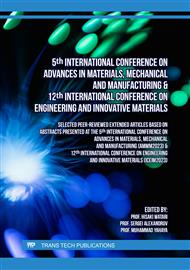p.55
p.73
p.79
p.89
p.99
p.105
p.111
p.119
p.125
Development of Recurrent Neural Network Model for Bridge Effect Detection by Various Fibers Incorporated in Fiber-Reinforced Concrete
Abstract:
The purpose of this study is to detect the bridging effect formed at cracks after external forces act on various types of fiber-reinforced concrete reinforced with microfibers ranging in size from 10 μm up to 40 μm using a recurrent neural network (RNN). The bridge effect, which is an advantage of fiber-reinforced concrete(FRC) and a criterion for judging usability, can prevent cracks and brittle failure of concrete by forming a net with fibers from cracks formed in concrete to transmit stress. In this study, concrete surface image data taken from crack sections of various fiber-reinforced concrete were collected to create a crack and bridge effect exploration model based on RNN. Afterwards, the features of the part where the bridge effect appeared were directly labeled to enable high accuracy detection in the data added after model production. As a result of detecting surface cracks and bridge effects after modeling, the more sophisticated the labeling, the more accurate image data analysis was possible.
Info:
Periodical:
Pages:
99-104
Citation:
Online since:
December 2023
Authors:
Price:
Сopyright:
© 2023 Trans Tech Publications Ltd. All Rights Reserved
Share:
Citation:



